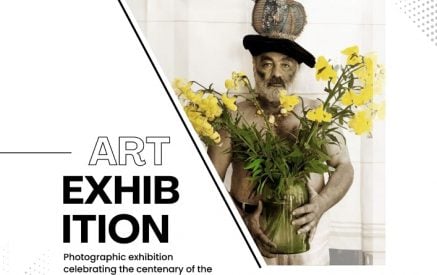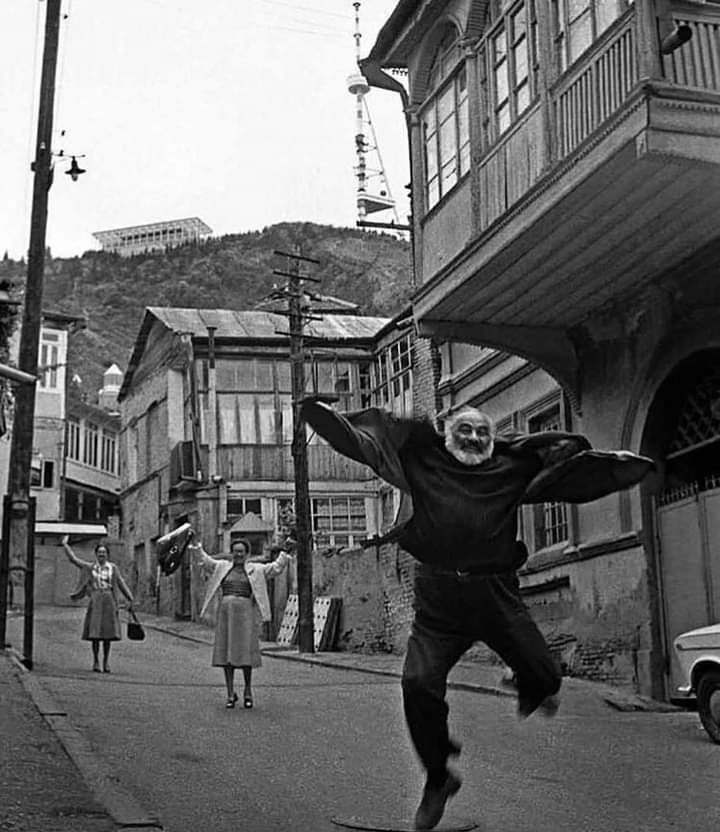The book-atlas titled “Atlas Hayk, Nairi, Armenia”, is the last work of photographer Sen Hovhannisyan, director of the Nahapet publishing house, about the country of Armenians. Similar atlases have been published in different languages, but in this case the author combines the map with the text and presents a unique collection of work of its kind. From this book-atlas of Sen. Hovhannisyan, we have selected an interesting section with the title “Sergey Parajanyan, Artist Cartographer.”
The author writes that the map is also a work of art. When a geographer, a cartographer and an artist merge around one idea, they arrive at a unified perception and cognition of the world. Accordingly, a wider opportunity to represent the high credibility and reliability of the maps was assumed. “Parajanyan was convicted twice on false charges: in Ukraine (1974-1978) and Tbilisi (1982). Prominent individuals raised their voice of protest for his release: François Truffaut, Jean-Luc Godard, Federico Fellini, Luchino Visconti, Michelangelo Antonioni… He creates many works in detention: collages, drawings, etc., about which he writes: “I’m not allowed to make films and I started making collages. Collage is condensed film.”
For them, he uses pictures from the pages of magazines, various things, etc., obtained in the detention center in various ways. When the exhibition of Parajanyan’s collages was opened, Parajanyan wrote on that occasion: “I am not a professional and I do not pretend to be. My exhibition is not a hobby, but my professional necessity. I am a director, I studied with great masters Savchenko and Dovzhenko, both of them painted, Eisenstein also painted, and unintentionally I also started painting and making collages. I want children to visit the exhibition, because the time has come to search for, find and realize the beautiful, the beautiful that surrounds us – our mountains, the sky.” Martiros Saryan says: “Man is nature, nature is man,” Parajanyan says.
“There is no miracle. I am looking for it, it is in nature,” the two great artists are looking for the meaning and secrets of life, the good in nature. Sergey Parajanyan’s “Karabakh” collage was created during the first period of the Karabakh conflict (1988-1994), in 1989,” writes Sen Hovhannisyan. ”
Read also
At the center of the collage is fixed the map of Armenia, in the central part of which is the Geghard monastery complex (the famous geghard with which the Roman soldier pierced the side of Christ was kept here). A part of Armenia was cut off and joined to Artsakh (Karabakh) as a burnt piece of the same map.
The collage also depicts the portraits of the characters of the film “The Color of Pomegranates” shot by the author, the master Parajanyan and the red poppy as a symbol of memory of all the victims of military and civil conflicts. In the corners of the work there are pre-Christian symbols, which refer to the 4th century B.C. when the territory of modern Armenia and Artsakh was included in the Armenian kingdom of Yervanduns.
This work created by Sergey Parajanov, conventionally called “The Shirt”, is a unique mapping of the Soviet dictatorial reality, a vivid expression of the sensitive artist’s mental turmoil. The image is symbolic. Armenia is divided into two parts by a barbed wire, at the end of the dividing line there is a pair of scissors that “dare” to cut it.
Beyond the barbed wire is Turkey, where Mount Ararat is in captivity, to the right, around the top are animals running in the form of the devil, to the left, deer and gazelles, also running. On the left side of the image is the Armenian Grandfather with his flock, on the left – the tormented Armenian people. On the top of Mount Ararat is the image of Christ, above which are Russian soldiers, one of whom desecrates the image of Christ, on the right is the Virgin Mary, above which, near the remains of the young man, are weeping women.
The entire cover is covered with floral motifs, ornaments and other symbols. In 1968, he completed the shooting of the film “The Color of Pomegranates” (Sayat-Nova) at the “Hayfilm” film studio. The film begins with a symbolic pomegranate, from which red juice flows, and spreads across the screen, depicting a map of historical Armenia.
Sergey Parajanyan writes: “Armenia is not a travel destination for me, I am Armenian with my cells, marrow and everything. I have fulfilled my duty to the motherland to some extent. Even to the extent that I have opened a window in Armenian cinema through which one can examine the amazing artistic world of Narekatsi and Sayat-Nova, Toros Roslin and Sargis Pitsak, Haghpat and Sanahin, with a modern cinematographic discretion…” says the director of the Nahapet publishing house.
The photos were provided by Sen Hovhannisyan
Gohar HAKOBYAN






























































